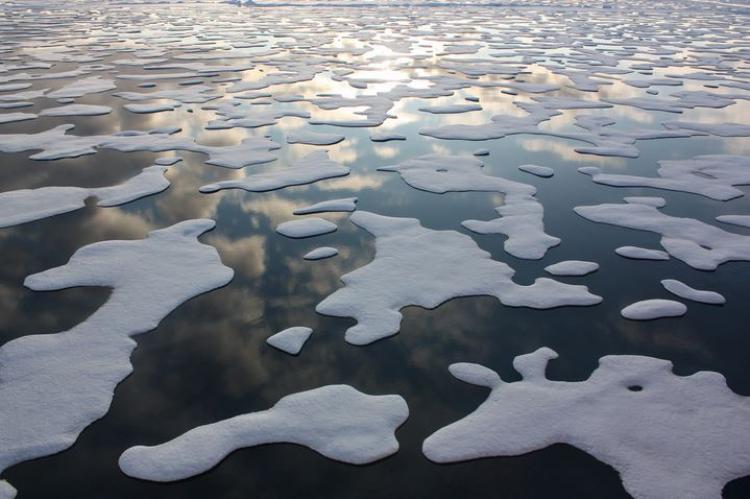Higher temperatures may cause pollution in Arctic to drift to other countries
A study has found that pollution in the Arctic may find its way to other countries as a result of rising temperatures.
As global temperatures rise, declining sea ice not only melts the sea ice in the Arctic, it also stirs up the remaining ice faster. This paves the way for more industrial development and resource extraction to find its way to the Arctic. According to a new study published in Earth's Future, this increases the risk of oil spills and other pollution, as well as the possibility that ice-rafted pollution may drift into another country’s waters.
In the study, researchers at Columbia and McGill universities discovered that faster moving sea ice exports a million square kilometers of ice from one nation to another each year. That area would cover about a fifth of all sea ice formed.
"If you have a Deepwater Horizon-type spill where sea ice is forming, the oil can get into the ice and be transported to another country's waters," said co-author Stephanie Pfirman, a researcher at Barnard College and Columbia University's Lamont-Doherty Earth Observatory. She added that the study showed that what happens in your EEZ doesn’t necessarily stay there.
As Arctic sea ice thins and retreats, the winds push it faster and farther. This allows year-old ice to escape the summer-melt front, even as the front advances north. This study, which used satellite images and GPS-tagged ice buoys, tracked 239 parcels of ice from 1988 to 2014 from formation to demise. The findings confirm that ice floes have picked up their pace by about 14 percent each decade.
Based on their calculations, the scientists found that about a million square kilometers of ice drifted beyond the exclusive economic zone (EEZ). This comprises 21 percent of all ice.
Most of the Arctic sea ice originates in Russian waters, then drifts into the waters off Norway and Greenland. The region’s second largest exporter is the United States, which offloads most of it on Russia. Most of the imported ice in the United States comes from Canada.
According to lead author Robert Newton, an oceanographer at Lamont-Doherty, “These regions are all connected. If you have oil spills off one continental shelf, the ice will move that pollution to other nations, and to any wildlife refuges that we may create. If you're planning for conservation and stewardship you need to take a pan-arctic view."


